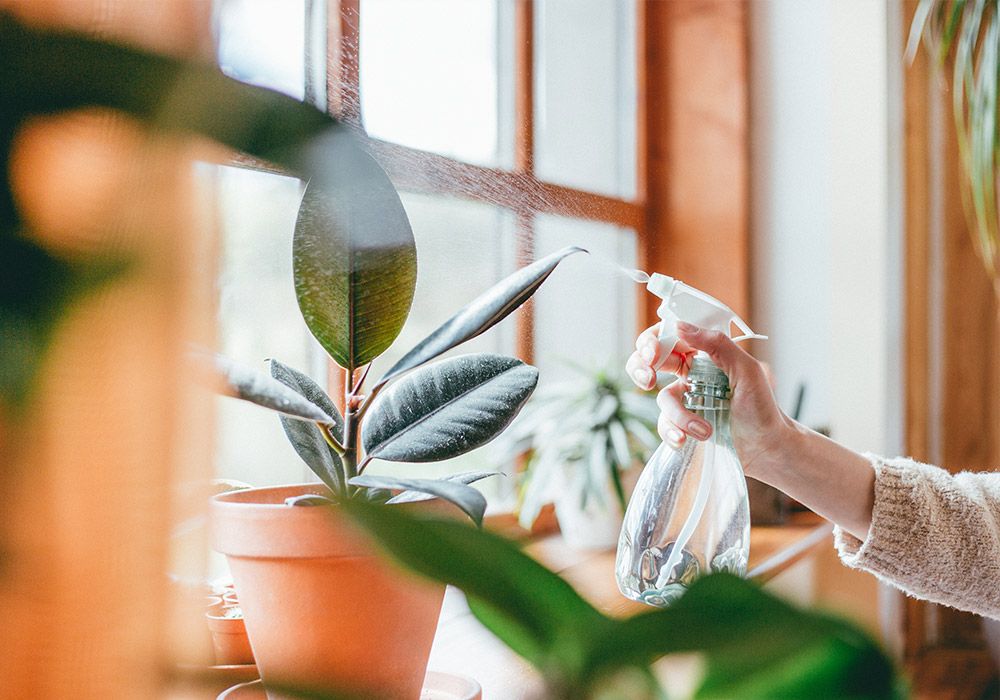If you’re searching for an easy-to-grow, air-purifying, and visually striking houseplant, the Rubber Plant (Ficus elastica) deserves a spot on your list. With its broad, glossy leaves and tall, elegant structure, it makes an impressive statement in any indoor space. And the best part? You don’t need harsh chemicals or complicated routines to keep it healthy and thriving — you can care for your Rubber Plant naturally with simple, eco-friendly practices.
In this complete guide, we’ll dive into everything you need to know about caring for a Rubber Plant naturally, including lighting, watering, natural pest control, soil requirements, pruning, propagation, and common problem fixes.
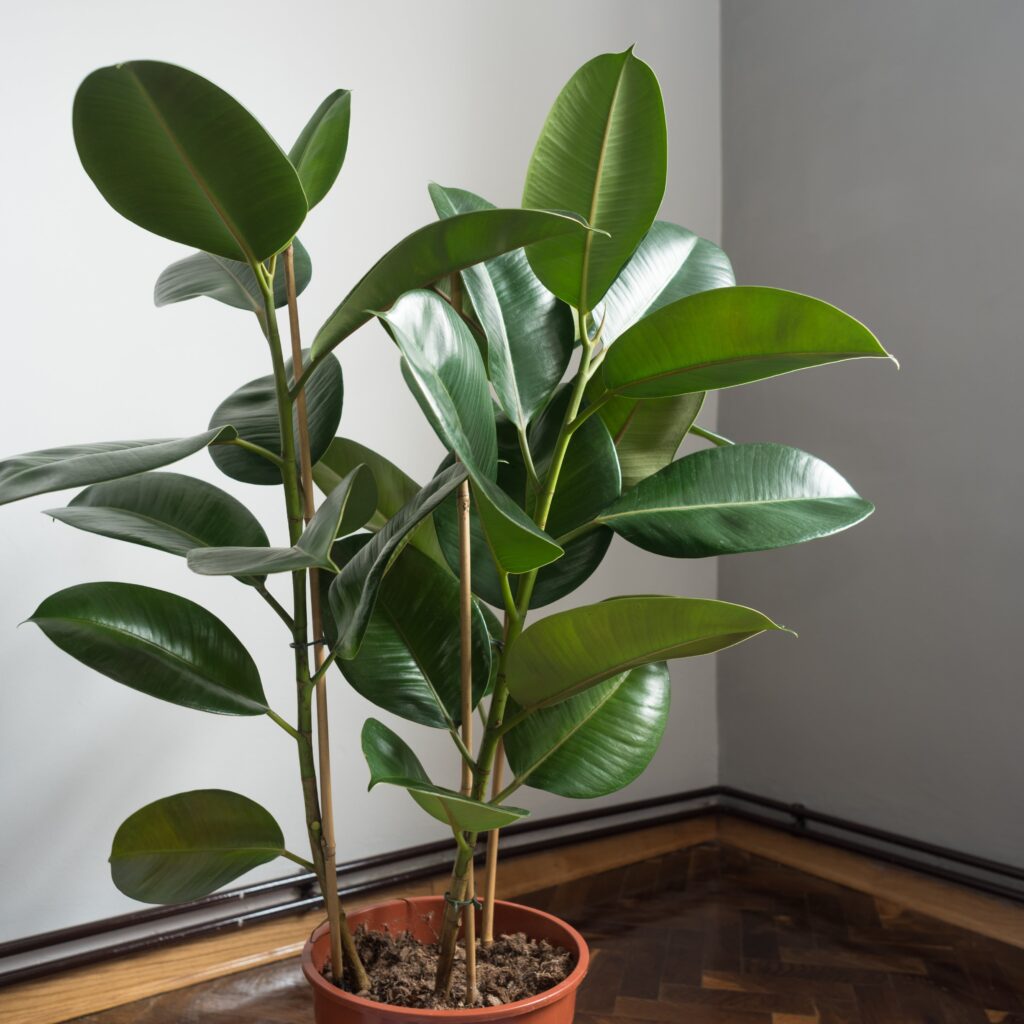
What Is a Rubber Plant?
The Rubber Plant, scientifically known as Ficus elastica, is a member of the fig family (Moraceae). Native to the tropical regions of Southeast Asia, it earned its name from the milky latex sap it produces, once used in the early days of rubber manufacturing.
Rubber Plants are loved for their thick, leathery leaves, which range in color from deep green to burgundy or even variegated shades. In their native habitats, these trees can grow up to 100 feet tall, but indoors, they typically reach between 4 to 10 feet, depending on care and container size.
Popular varieties include:
- Ficus elastica ‘Robusta’ – classic deep green leaves.
- Ficus elastica ‘Burgundy’ – dark purple-brown foliage.
- Ficus elastica ‘Tineke’ – variegated cream, green, and pink leaves.
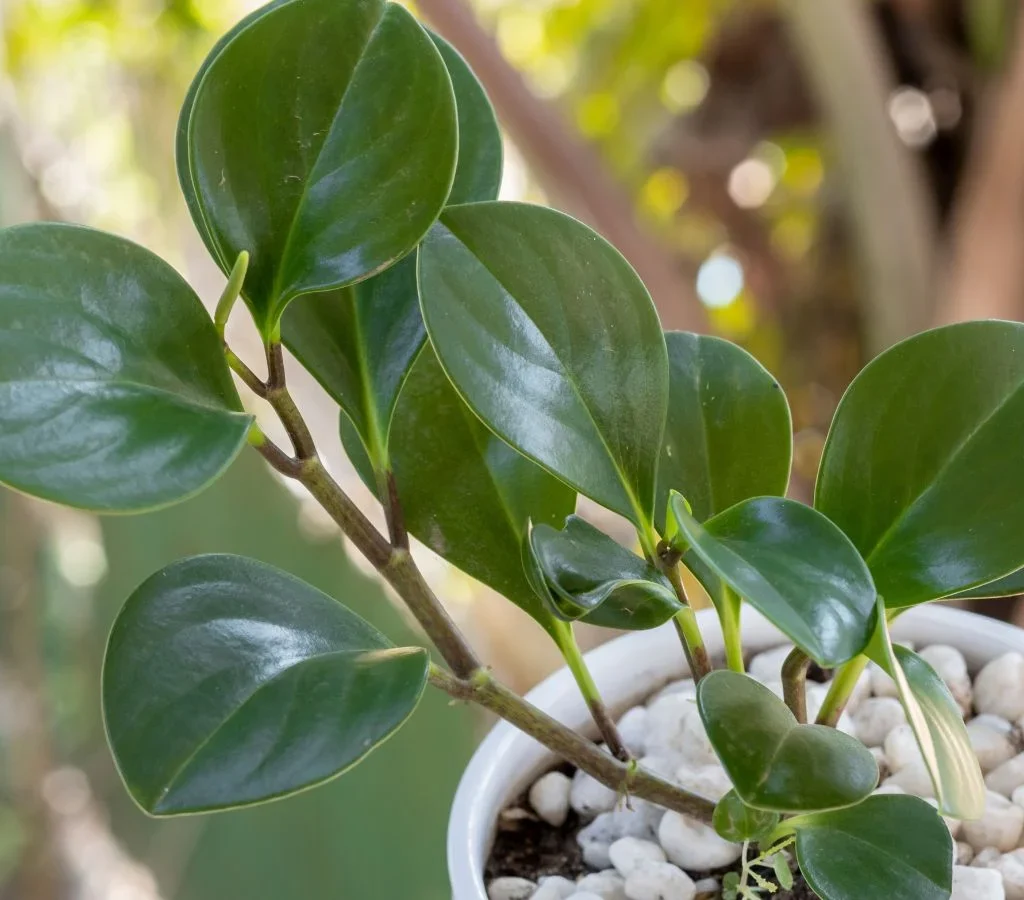
Ideal Growing Conditions for a Rubber Plant
To care for a Rubber Plant naturally, the goal is to mimic its tropical origins while keeping your methods safe, sustainable, and chemical-free.
Light Requirements
Rubber Plants love bright, indirect light. Too much direct sun can scorch the leaves, while too little light causes leggy, weak growth.
Best Locations:
- Near an east or west-facing window with sheer curtains.
- A few feet from a bright south-facing window.
If light levels drop too low, your plant’s lower leaves may turn yellow and fall off.
Natural Tip: Rotate the plant every few weeks to ensure even light exposure and balanced growth.
Temperature and Humidity
Being a tropical plant, it thrives in warm, slightly humid conditions.
- Ideal temperature: 65°F to 80°F (18°C to 27°C)
- Avoid: Cold drafts, sudden temperature changes, or proximity to heaters and air conditioners.
Natural Tip: Increase humidity naturally by placing the pot on a pebble-filled tray of water, grouping it with other plants, or occasionally misting with filtered or rainwater.
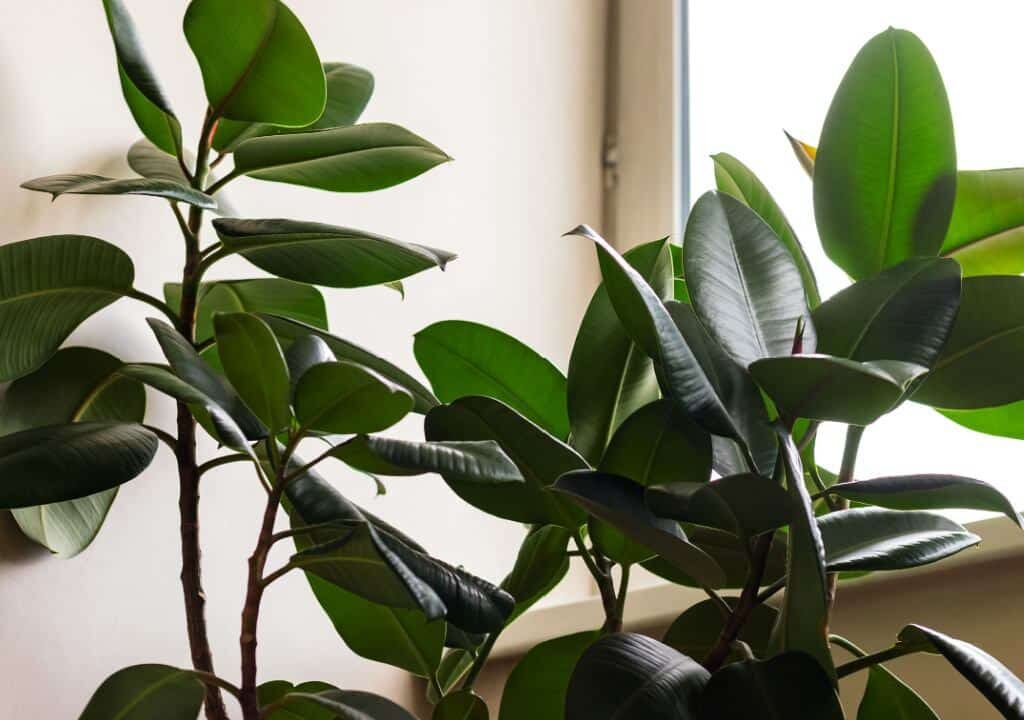
Watering a Rubber Plant Naturally
Rubber Plants prefer their soil to dry out slightly between waterings but never completely.
When to Water
- Stick your finger 1-2 inches into the soil. If it feels dry, it’s time to water.
- Water more often in spring and summer when the plant is actively growing, and reduce in fall and winter.
How to Water
- Use filtered, distilled, or rainwater to avoid mineral buildup from tap water.
- Water thoroughly until it drains from the bottom, then discard excess water to prevent root rot.
Signs of Overwatering:
- Yellowing leaves
- Droopy stems
- Mushy soil
Signs of Underwatering:
- Curling leaves
- Dry, crispy edges
- Leaf drop
Natural Tip: Use room-temperature water to avoid shocking the roots.
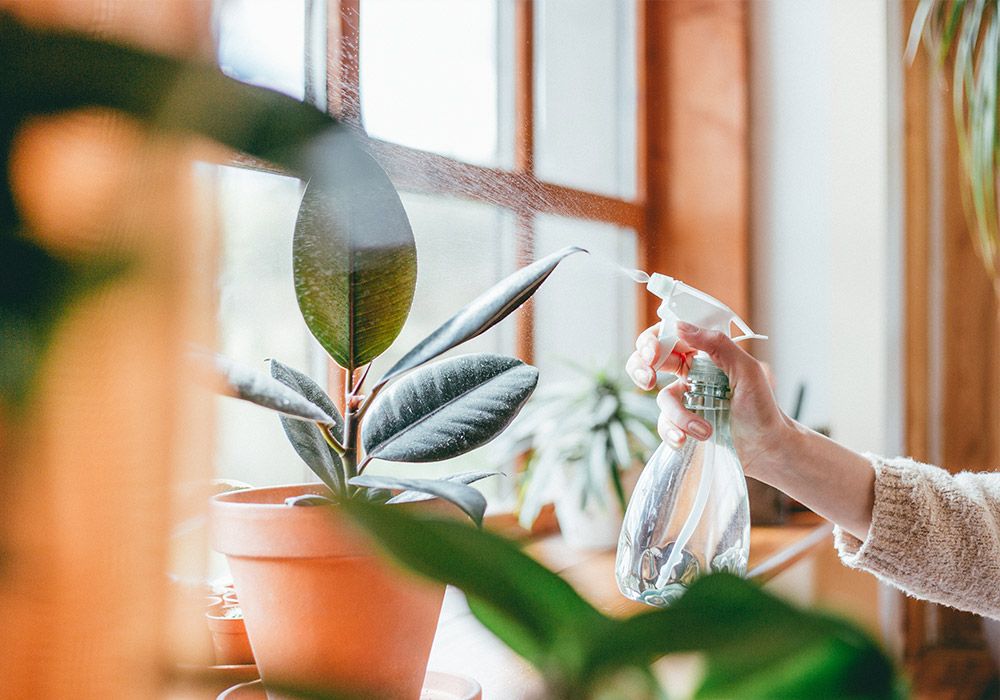
The Best Natural Soil for Rubber Plants
Rubber Plants prefer well-draining, nutrient-rich soil that retains moisture without becoming soggy.
DIY Natural Soil Mix:
- 2 parts organic potting soil
- 1 part coarse sand or perlite for drainage
- 1 part compost or coconut coir for moisture retention and nutrients
Natural Tip: Adding a handful of worm castings to the soil mix can naturally enrich it with nutrients and beneficial microbes.
Natural Fertilizing Methods
Skip the synthetic fertilizers — you can keep your Rubber Plant thriving with natural, organic options.
Natural Fertilizers:
- Diluted compost tea: Rich in nutrients and beneficial bacteria.
- Banana peel water: Soak banana peels in water for a few days and use the liquid to water your plant.
- Worm castings: Sprinkle a small amount on top of the soil every few months.
- Liquid seaweed or fish emulsion: Use monthly during the growing season for a gentle nutrient boost.
Fertilizing Schedule:
- Every 4-6 weeks in spring and summer.
- Skip fertilizing in fall and winter when growth slows down.
Natural Pest Prevention and Treatment
While Rubber Plants are relatively resistant to pests, they can occasionally attract spider mites, mealybugs, or scale insects.
Natural Prevention:
- Wipe leaves regularly with a damp cloth to remove dust and deter pests.
- Mist the plant with water to raise humidity and discourage spider mites.
Natural Treatments:
- Neem oil spray: Mix 1 teaspoon neem oil with 1 quart of water and a few drops of mild natural soap. Spray the plant’s leaves and stems.
- Insecticidal soap: Use a gentle, organic soap solution to wipe down affected areas.
- Isopropyl alcohol: Dab mealybugs or scale with a cotton swab dipped in diluted alcohol (one part alcohol to two parts water).
Pruning and Grooming Naturally
Regular pruning keeps your Rubber Plant looking tidy and encourages fuller growth.
How to Prune:
- Use clean, sharp pruning shears.
- Cut just above a leaf node to encourage branching.
- Remove yellowing or damaged leaves.
Natural Tip: Use the pruned stems for propagation or add them to your compost pile to reduce waste.
Propagating a Rubber Plant
Rubber Plants are easy to propagate naturally through stem cuttings.
Steps for Propagation:
- Cut a healthy stem below a leaf node, about 6 inches long.
- Remove lower leaves, leaving 2-3 at the top.
- Dip the cut end in natural rooting hormone (like cinnamon powder).
- Place in water or directly into moist soil.
- Keep in bright, indirect light and maintain high humidity until roots develop.
Roots usually form within 4-6 weeks.
Common Rubber Plant Problems and Natural Solutions
| Problem | Symptoms | Natural Solution |
|---|---|---|
| Yellowing Leaves | Overwatering, poor drainage | Let soil dry out, check for clogged drainage holes |
| Brown Leaf Tips | Low humidity, inconsistent watering | Increase humidity, water regularly |
| Leaf Drop | Stress from moving, drafts, or sudden changes | Keep conditions consistent, avoid moving plant often |
| Pests (spider mites, mealybugs) | Tiny webbing, sticky residue, visible insects | Spray neem oil or wipe leaves with insecticidal soap |
Styling and Display Ideas
Rubber Plants make stunning statement pieces, whether as a single tall specimen or in a group with other tropical plants.
Natural Styling Tips:
- Place in woven baskets or clay pots for an earthy, organic look.
- Combine with plants like Monstera, Snake Plant, or Pothos for a natural, indoor jungle vibe.
- Display near a window with indirect light to highlight the plant’s glossy leaves.
Is the Rubber Plant Safe for Pets?
Unfortunately, Rubber Plants are mildly toxic to cats, dogs, and humans if ingested, causing mouth irritation and stomach upset. Keep the plant out of reach of curious pets and children.
Final Thoughts
Caring for a Rubber Plant naturally is not only achievable but incredibly rewarding. By using organic methods, eco-friendly practices, and natural products, you can maintain a healthy, beautiful plant while creating a safer, greener indoor environment.
Whether you’re a seasoned plant parent or a beginner, with a bit of attention to light, water, and humidity — plus some natural TLC — your Rubber Plant can thrive for years, growing tall and lush as a vibrant, air-purifying centerpiece in your home.
